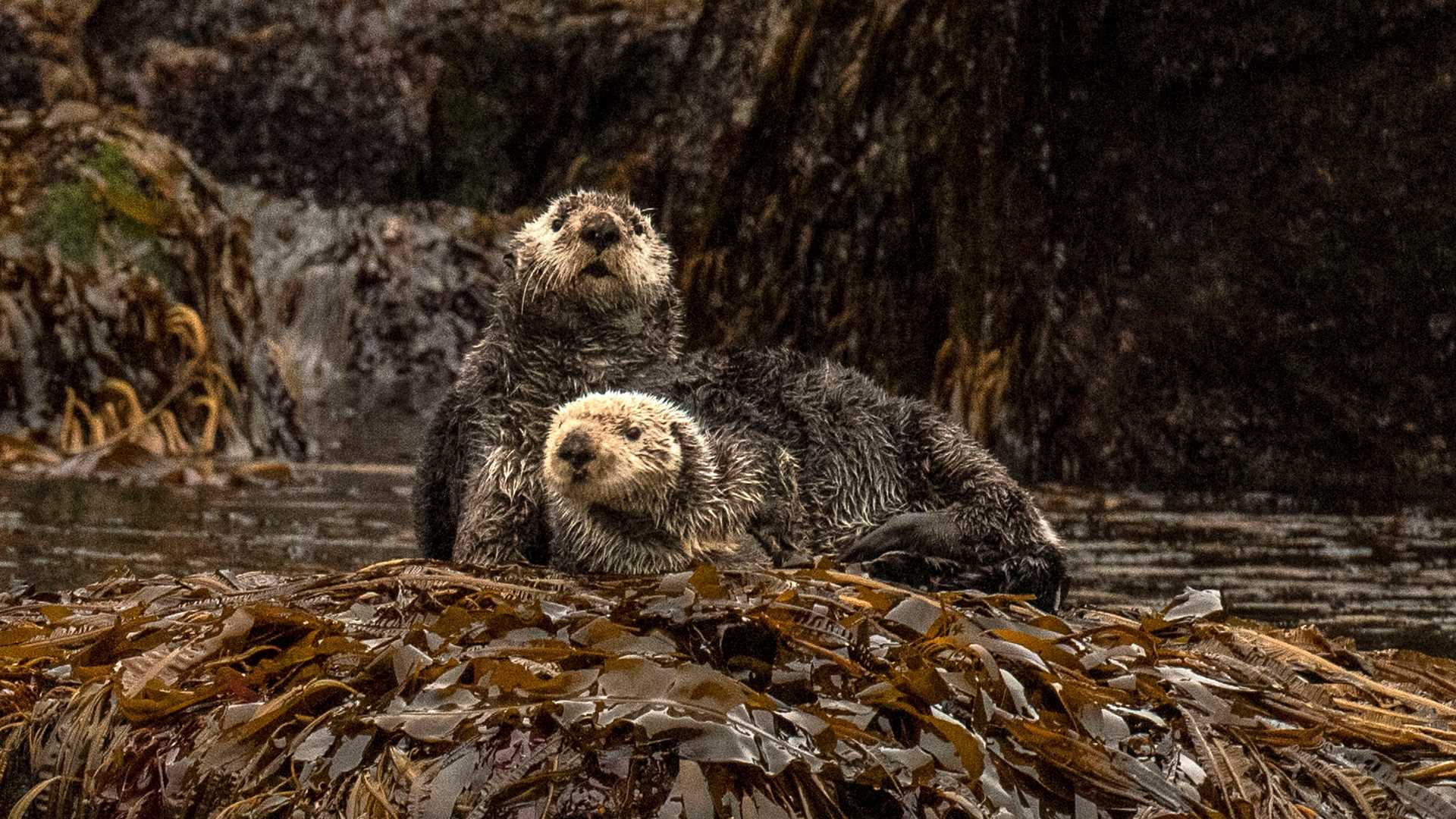Southeast Alaska greeted the expedition with a shroud of mist and light rain. National Geographic Sea Lion cruised east through the Icy Strait, bound for the Inian Islands on the extreme northwest edge of the Alexander Archipelago.
In the early morning, explorers on the bow were treated to the sight of a small black bear patrolling the edge of a cobblestone beach. Fresh out of hibernation and with the salmon spawn still months away, this bear—a member of the smallest but most common of the three North American species—was busy searching for invertebrates hiding under rocks along the tideline.
After anchoring in the sheltered lee of the Inians, our intrepid teams of explorers launched by Zodiac, punching out of the sheltered waters to face the full force of the open Pacific Ocean. A favorite wildlife cruise of the naturalists, the Inians didn’t disappoint. Steller sea lions were on the hunt in the horizontal rapids. They popped up from dives among the whirlpools and eddies with flat fish clenched in their jaws. Tucked back into the quieter kelp gardens, we drifted beside rafts of sea otters, some with young ones riding on their mothers’ bellies.
After lunch on the ship, we ventured to nearby George Island, once a lonely World War II outpost. Surprising a gracious camp of sea kayakers from Yukon, we spent the next few hours kayaking the gin-clear waters of Granite Cove and hiking deep into the temperate rainforest. Several boaters were treated to a close-encounter with a curious humpback whale. One hike led to the remains of a rusting gun with a barrel as fat and long as a telephone pole. Concerned the Japanese Navy might attempt a North American invasion here, the American military sent twenty soldiers to guard the entrance to Cross Sound. Never fired in anger, the gun lingers as a reminder that the vast Pacific connects so many nations.
Dinner found us back onboard as we struck east toward Lynn Canal. The mist and rain of the day evaporated into brilliant sunshine. An informative presentation on killer whales by marine researcher and Lindblad/National Geographic naturalist Adam U was postponed as a pod of playful Dall’s porpoises dropped in for a bow surfing session. These sleek black-and-white cetaceans are among the fastest on the planet, topping out at 35mph for short bursts. They soon grew bored with our speed and zipped off to leave us marveling at the ice peaks sliding past.







